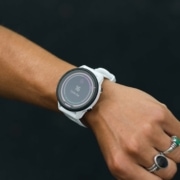The providers at Back in Line love to encourage Making Healthy Contagious!
One of the ways I encourage healthy living is by investing in wearable technology.
I prefer Garmin watches but there are various options on the market such as the Oura Ring, the Whoop Strap, and Fitbit devices. There are many pros and cons to consider when considering your investment, but let’s talk about why I encourages wearable technology.
- To help you understand your overall health. Many of us are so busy with life we don’t have an accurate pulse check on our nervous system. Our nervous system controls everything—from your heartbeat to digestion and elimination of your food, your thoughts, perception of pain and emotions, and your muscles, and organs! Sometimes we find people’s fight and flight system to be linked to their G.I. Or, we see that cognitive decline is related to lack of quality sleep.
- Understand your sleep quality. Sleep quality is underrated and has not had enough emphasis put on tracking it. Sleep, esp in Deep and REM stages. Sleep is vital to your overall health, wellness, and anti-aging. Someone may get 8 hours of sleep but spend little time in deep and REM that helps our providers work with our patients on biohacking, and supporting them nutritionally to get them into those stages.
- Being mindful of your current state of nervous system functioning. It’s amazing how many people can share their data with me and say “I didn’t realize I spend so much time in a high-stress state.” Knowledge and awareness are powerful and influential in our behaviors. Oftentimes it gives patients the permission to slow down, or, if you have a Garmin*, it’ll tell you to up-level your fitness to get you to peak performance because your HRV is well balanced and sleep quality is on point.
*Please note, if you purchase a Garmin, make sure it includes HRV tracking. Not all Garmin’s do. From my understanding, the Whoop Strap has the most accurate technology, but personally, I don’t appreciate app memberships or subscription-based devices. The Oura ring may be less accurate but still helpful tool. Many people appreciate not having a bulky watch on their wrist so this is more helpful for their needs. The Oura ring is also subscription-based.
Heart Rate Variability (HRV)
Heart Rate Variability (HRV) is the variation in time between successive heartbeats, which is controlled by the autonomic nervous system (ANS). The ANS is responsible for regulating involuntary bodily functions, including heart rate, breathing, and digestion. HRV specifically refers to the differences in time intervals between consecutive heartbeats, and these variations are influenced by both the sympathetic nervous system (responsible for the “fight or flight” response) and the parasympathetic nervous system (responsible for the “rest and digest” response).
- HRV is typically measured in milliseconds and is considered an essential indicator of the body’s autonomic nervous system activity and overall health.
- A higher HRV indicates a more flexible and adaptable autonomic nervous system, while a lower HRV suggests a less adaptive system.
Here’s why monitoring HRV is important
- Stress and Recovery Assessment: HRV can be used to assess stress levels and recovery status. When the body is under stress, the sympathetic nervous system dominates, leading to reduced HRV. On the other hand, during periods of relaxation and recovery, the parasympathetic nervous system dominates, resulting in increased HRV. Monitoring HRV can help individuals understand how well their body is coping with stress and whether they are adequately recovering from strenuous activities.
- Fitness and Training: HRV can serve as an indicator of fitness level and training readiness. During periods of intense training, HRV may decrease due to increased stress on the body. By monitoring HRV, athletes and fitness enthusiasts can optimize their training schedules and prevent overtraining, thus reducing the risk of injury and improving performance.
- Heart Health: HRV has been linked to cardiovascular health. A higher HRV is associated with better cardiovascular fitness and a lower risk of heart disease. It can also indicate the presence of certain heart conditions and help in their diagnosis and management.
- Mental Health: HRV is linked to emotional well-being and mental health. Lower HRV has been associated with conditions like anxiety, depression, and post-traumatic stress disorder (PTSD). By tracking HRV, individuals can gain insights into their emotional states and use this information to manage stress and emotions more effectively.
- Overall Well-Being: Monitoring HRV can provide a holistic view of overall well-being. By understanding the balance between sympathetic and parasympathetic nervous system activity, individuals can make lifestyle adjustments to promote better health and wellness.
It’s important to note that while HRV monitoring can offer valuable insights, it should be interpreted in conjunction with other relevant health data. Additionally, different individuals may have different baseline HRV values, so it’s essential to track trends and changes over time rather than comparing absolute numbers. HRV monitoring is commonly done through wearable devices or smartphone apps that can analyze heart rate data and calculate HRV.

